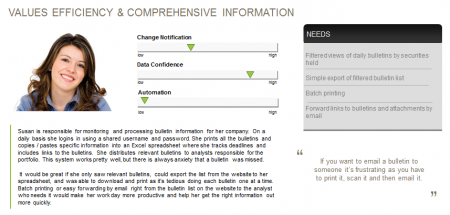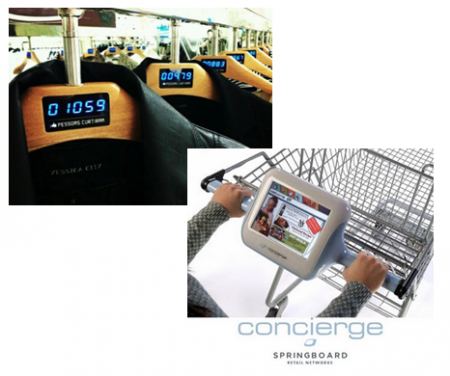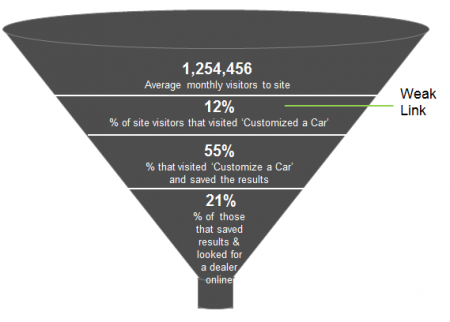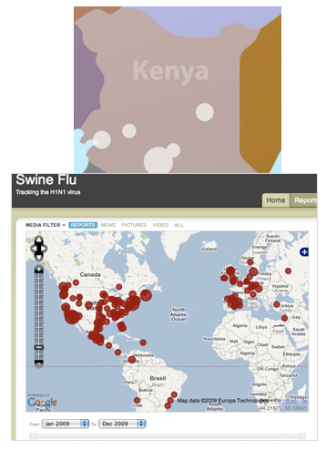Our society is at an inflection point where we can bring enough data together, computing power to process it, and bandwidth to distribute it in a timely, affordable way to make better decisions. Things that were seen as unattainable before are now possible. Organizations have the opportunity to rethink how they do business differently and stand out from their competitors by collecting impactful data, make better decisions faster, and differentiate themselves. However, few companies have realized the potential and shifted business intelligence and analytics into the centre of their decision making process.
Here are four ways organizations can make better decisions faster through analytics:
1. Meet the Needs of Your Customers in More Acute Ways and Build Loyalty
 In the past, companies were able to collect recalled data (e.g. ask consumers about their purchase experience after the fact) through qualitative and quantitative research to understand the needs and behaviours of the customer. Today, organizations are better equipped to do so with the sentiment web and the better and more affordable ability to collect in-the-moment information.
In the past, companies were able to collect recalled data (e.g. ask consumers about their purchase experience after the fact) through qualitative and quantitative research to understand the needs and behaviours of the customer. Today, organizations are better equipped to do so with the sentiment web and the better and more affordable ability to collect in-the-moment information.
For example, in the past few years Delvinia has been producing customer personas for clients through qualitative and quantitative research methods. Through the use of personas (archetype representative of a group of people with similar goals, attitudes, and behaviours), we are able to help clients identify the needs of their customers, empathize with them, and deploy resources effectively to meet their needs.
Today, the ability to collect better in-the-moment behavioural data and sentiments (e.g. social media) enables us to provide our clients with a richer set of intelligence for better decision making. For example, with the use of mobile surveys and social listening techniques, we are able to capture in-the-moment sentiments that would otherwise be forgotten, and layer that onto our existing methodologies, creating more insightful personas or customer journey maps.
There are too many companies that remain in the brand-centric world and do not sufficiently understand their customers’ needs. The ones that get it right differentiate themselves and build loyalty with their customers.
2. Predict the Future State in Greater Variety and More Granular Areas of the Operation and Create Efficiencies
 In the past, business intelligence allowed organizations to predict longer term trends by analyzing customer, competitive, and technology trends and to make better decisions in priority areas by looking at analytics. Today, affordable technologies allow organizations to gather insights and make predictions in greater variety and in more granular areas of the business faster and in affordable ways.
In the past, business intelligence allowed organizations to predict longer term trends by analyzing customer, competitive, and technology trends and to make better decisions in priority areas by looking at analytics. Today, affordable technologies allow organizations to gather insights and make predictions in greater variety and in more granular areas of the business faster and in affordable ways.
For example, technologies such as the Concierge (digital navigator/signage on the shopping cart) add value to grocery shoppers by making them aware of the promotions in store to better navigate the aisles. At the same time, it provides the organization with insights on how shoppers navigate their stores to enable better merchandise placement.
As another example, the Brazilian retailer C&A introduced a high-tech hanger that tallies the number of Facebook “likes” an item of clothing on its racks receives. Although at this time the digital hanger is limited to providing customers with insights to make better decisions (based on the popularity of an item), it gives us a view into how affordable technology can help organizations make better decisions faster, such as in areas like real-time inventory planning in the near future.
3. Identify Weak Links To Fix
 Analytics can also help organizations identify the weak links in one’s operations to fix and unclog the sales funnel – whether it is product and offerings, inventory management, or resource allocation.
Analytics can also help organizations identify the weak links in one’s operations to fix and unclog the sales funnel – whether it is product and offerings, inventory management, or resource allocation.
To illustrate, here is a simplistic example based on a car purchase scenario. In the car purchase journey, the key decision steps may include:
- selecting/customizing a car (e.g. model, color, trim)
- getting a quote based on such customization, then
- finding a dealer
Through the use of the right metrics set up against the understanding of the customer path to purchase, we can identify the weak link(s) in the chain by comparing the performance of each activity against the benchmark figure. In the example shown on the right, we identified that the enticement to customize one’s own car is weak relative to the benchmark and other key decision steps. Therefore, we know that this is the area the organization should focus on. Once fixed, the bottom line impact could be significant as it allows prospects to flow through the sales funnel smoothly without getting stuck
4. Crowdsource and Collaborate
 Lastly, organizations can collect insights in near real-time from their employees, partners and community in an affordable manner and quickly identify trends and respond to them. As an example, Delvinia worked with one of its clients to create a collaboration tool where the dispersed sales team can provide feedback to its marketing team on the marketing collateral provided to support them. Using simple crowdsourcing techniques including ratings and reviews, the marketing group can quickly pick up on underperforming and undersupplied types of collateral and respond to them quickly. The insights that came out of the collaboration platform were instrumental in facilitating communication and enabling a more effective allocation of resources across the organization.
Lastly, organizations can collect insights in near real-time from their employees, partners and community in an affordable manner and quickly identify trends and respond to them. As an example, Delvinia worked with one of its clients to create a collaboration tool where the dispersed sales team can provide feedback to its marketing team on the marketing collateral provided to support them. Using simple crowdsourcing techniques including ratings and reviews, the marketing group can quickly pick up on underperforming and undersupplied types of collateral and respond to them quickly. The insights that came out of the collaboration platform were instrumental in facilitating communication and enabling a more effective allocation of resources across the organization.
As another example, during the 2008 post-election violence in Kenya, a few volunteers put together an app called Ushahidi, which means testimony in Swahili. The app allows people to report in unrests from different parts of the region so that appropriate responses can take place by those affected and by those providing relief efforts. This application was also leveraged to report in many political unrests and pandemics, including the Swine Flu pandemic where it helped identify the active areas.
The value and impact of Ushahidi, an application put together swiftly by volunteers without any funding, is profound. Now, imagine what an organization with resources can do with analytics. How can you change the way your organization does business to make better decisions faster? What unsolvable problems in the past can you now solve with affordable technologies, speed of data and access to analytics?